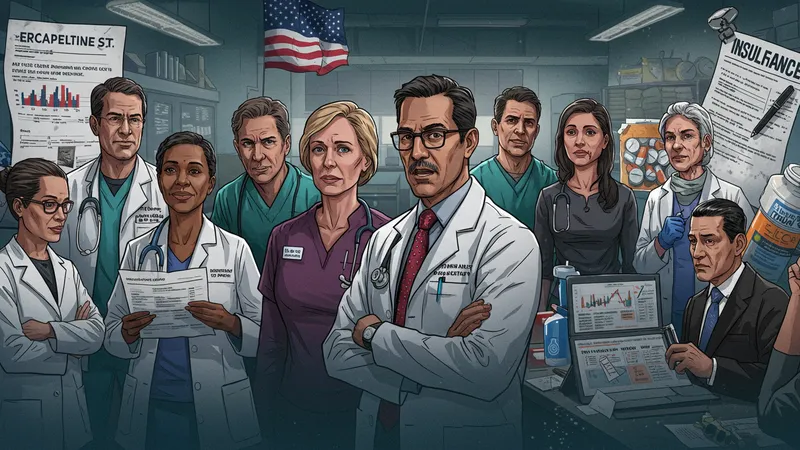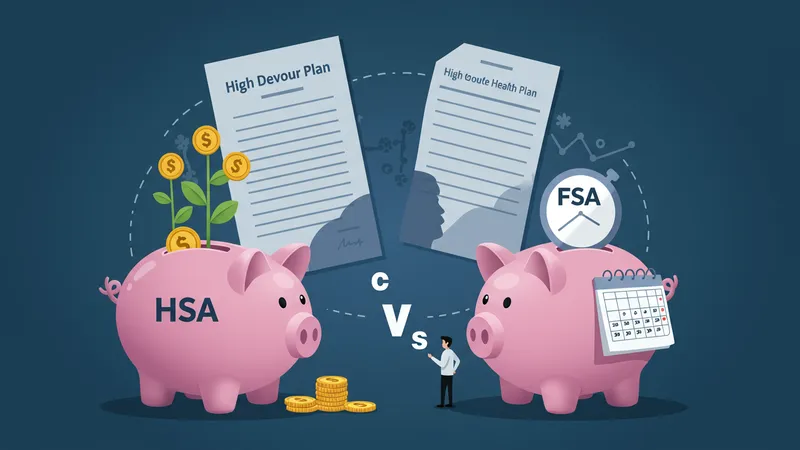Did you know that over 50% of Americans are reportedly unaware of what their health insurance actually covers? This isn't just a statistic; it's a wakeup call that demands our immediate attention. But why, you ask, is this topic seemingly more critical now than ever before?
The COVID-19 pandemic has turned the spotlight on healthcare systems globally, revealing just how essential comprehensive health insurance can be for individuals and families. Understanding exactly what your plan covers could be the difference between financial security and devastating medical debt.

But here’s the kicker: most policyholders don’t realize that much of what they believe to be covered might actually fall outside their policy's fine print. Hidden exclusions could lead to unexpectedly hefty out-of-pocket expenses. But that’s not even the wildest part…
Some insurance fines print details that are almost never disclosed during policy purchase discussions. For instance, did you know that certain "comfortable" policies might exclude mental health services unless explicitly added? But that’s just the tip of the iceberg…
So how do you navigate this maze of paperwork and fine print to truly safeguard your well-being? Experts have insights that even seasoned professionals find shocking. What happens next shocked even the experts…
One of the most astounding details hidden in health insurance policies is the presence of riders, or add-ons, that are often overlooked during policy discussions. These sneaky clauses can dramatically alter coverage, yet policyholders tumble into them unaware. Imagine needing a life-saving procedure only to be told it's not covered — because of a clause! What you read next might change how you see this forever.

Many health plans obfuscate critical care details in their rider clauses, making some benefits "optional" even though they're essential for comprehensive coverage. For example, dental and vision often remain add-ons. Insiders reveal that savvy policyholders scrutinize every line before signing. But there’s one more twist...
A crucial insider tip is to always ask for clarity on pre-existing conditions. Some insurers have intricate sub-sections explicitly excluding chronic illnesses, even if they improve. Knowing your policy’s position on this can prevent unpleasant surprises at crucial moments. This is where the real shocker lies: some insurers rely on legal loopholes to deny claims. An overlooked detail led one policyholder into spiraling debt when coverage was denied unexpectedly. Here’s why insiders are sounding the alarm...
Understanding how and why some coverage exclusions exist will prepare you for an unexpected scenario that could arise tomorrow. Imagine a medical emergency that you assumed was covered — when it truly wasn’t. Stay wise, stay informed, and save yourself a tremendous headache. And it gets even more complicated from here…
Most people underestimate the actual cost of lacking comprehensive health coverage. An emergency room visit with no insurance can easily exceed $3,000 for simple inpatient treatments. Without comprehensive insurance, the cost isn't just financial — it's a peace-of-mind issue, knowing your healthcare could plunge you into debt. But the hidden consequences are even broader...
Medical bankruptcy isn’t just a horror story whispered about at finance seminars; it’s a very present reality for thousands annually. It turns out that 62% of personal bankruptcies are related to medical expenses. These overwhelming costs creep up on the uninformed. But here’s the silver lining experts want you to know...
Suppose you strategize and select a policy that covers a wide range of scenarios — beyond what seems immediately necessary. This proactive decision-making leads to measurable peace of mind. While initial premiums might slightly increase, long-term savings and stress reduction are monumental. Yet, the ultimate shock comes from a perspective shift we’ll explore next.
The realization that adequate health insurance could mean life or death strikes home when you consider preventable delays due to financial constraints. Far too many stories tell of individuals avoiding medical care due to cost, only to face graver outcomes later. At the heart of these challenges lies one fundamental truth that could change everything...
Employer-provided health insurance might seem like the ideal perk, but it's not always the golden ticket to comprehensive coverage. While convenient, these plans might limit the choice of doctors or include high deductibles, sneaking less-than-ideal clauses past even the sharpest eyes. There’s more lurking beneath this seemingly safe surface...

Beyond this, employee health plans are often designed to be cost-effective for employers rather than for workers. Close inspection reveals that these plans may only cover a minimum percentage of healthcare costs, leaving hefty balances for individuals to settle. Yet, the most startling aspect is the potential to customize...
Did you know you can often decline employer options in favor of a marketplace plan that suits your needs better? By proactively selecting coverage, you can tailor benefits to what makes sense for you personally rather than settling for what's handed out. Still, switching paths requires informed decisions — a subject shrouded in mystery...
Many avoid exploring alternatives due to assumed complexities or misinformation. Consumers frequently overlook subsidies or tax benefits designed to make switching not just feasible but beneficial. Revealing these financial perks could quite literally alter the way you conceive your health insurance coverage. But before you make a decision, consider one last twist...
Despite controversial opinions, the Affordable Care Act (ACA) remains a pivotal pillar of contemporary healthcare, but what’s real versus myth, and how does this affect your insurance choices? Some argue ACA created a safety net, while critics claim it inflated costs. But the truth, cloaked under layers of political debate, might just surprise you.

The ACA introduced protections for those with pre-existing conditions, making coverage accessible to many previously denied. But beyond basic protections, it also demanded a broader scope of benefits, ensuring essential health services without additional costs. However, something more insidious is brewing behind the scenes...
For every success story about the ACA, there are whispered inefficiencies complicating small-business compliance. Navigating these waters requires sharp insight and careful examination of state variations within the ACA’s structure. But as insiders unravel the layers, one unexpected reality stands out starkly...
Beyond political debates lies an untouched truth about the ACA’s influence on competitive insurance marketplaces. Increased competition often leads insurers to offer better rates, but the trick is knowing where and how to look for these deals. For those in the know, this competitive edge becomes the game-changer. But that’s not the final twist...
Unpacking health insurance terminology can feel like deciphering an archaic language. Yet, deciphering "deductibles," "copayments," and "out-of-pocket max" is crucial to fully understanding your coverage. But here, the complexity can often act as a smoke screen, hiding vital information in plain sight...

Beneath the jargon lies the real difference between adequate and comprehensive coverage. Skip the lesson in understanding terms like "premium" at your peril; this word interprets the cost of your safety net. Surprisingly, even seasoned policyholders get tripped up here — a fact one coverage expert found startlingly common...
Hidden among the words are clauses and details that affect real-world application. The importance of clarity on these components cannot be overstated, yet improperly understood language results in misinterpreted benefits. Knowing how these terms mingle in your policy can lead to informed decision-making — here's the surprising insight that flips the script...
Arming oneself with clear understanding empowers smarter, and ultimately cheaper, insurance choices. The jargon becomes less intimidating when one considers it from a perspective of untapped potential rather than confusion. Armed with the right terminology, the insurance landscape transforms entirely, unlocking people’s ability to truly manage their healthcare futures. This enlightenment could redefine your future steps…
Health Savings Accounts (HSAs) and Flexible Spending Accounts (FSAs) offer tax benefits that appeal to thrifty consumers looking to reduce healthcare expenses. Their premise is tantalizing: put away pre-tax dollars for medical expenses. But is it all it's cracked up to be when scrutinized more closely?

HSAs, in particular, extend beyond immediate tax relief, growing investments over time similar to other retirement accounts. But here’s the crunch: you must be enrolled in a high-deductible health plan (HDHP), which might not suit everyone. Some find this requirement unexpectedly burdensome...
In contrast, FSAs provide a more straightforward, use-it-or-lose-it benefit annually — prompting a spend-before-expire mentality. While FSAs offer flexibility, they lack the enduring benefits of HSAs. But hidden within FSAs are limitations that can impact those silent assumptions no one talks about...
Navigating which account benefits you relies heavily on individual medical and financial circumstances. While some delight in the growth potential of HSAs, others appreciate the immediate payoff of FSAs. Deciphering this nuanced decision might be more critical than initially thought, affecting not just savings but medical care logistics. The surprising implications continue...
Telemedicine boomed amid the pandemic, spotlighting both its convenience and unforeseen challenges. While it offered a lifeline in restricted environments, its rapid adoption has also uncovered issues with equitable access and comprehensive care. Could what was hailed as the future now betray its potential fragility?

Among its benefits, telemedicine removes geographical barriers, allowing patients to consult specialists globally. Yet, this new frontier isn't without its pitfalls when considering insurance coverage. Providers vary in how they handle telemedicine claims — specificity that sometimes isn’t clear upfront...
Furthermore, this digital shift magnifies inequalities in internet access, affecting rural and underprivileged communities. Insurance coverage gaps loom over telehealth, questioning affordability and access equality. Proponents claim a future where technology enables empowerment, but can this ideal overcome barriers built within insurance frameworks?
As telemedicine continues to evolve, it intersects crucially with how we define comprehensive insurance. What was once novel to the industry now becomes an enduring component influencing policy benefits. How insurance plans adapt may dictate the success of healthcare leaps into the future. Herein lies perhaps the most unexpected insight...
While there has been an increased focus on mental health awareness, insurance coverage still lags painfully behind. Despite laws demanding parity, ambiguity shrouds the extent to which mental health services are covered, often leading to prolonged battles between providers and insurers.

The prevalence of mental health disorders — affecting one in five adults annually — underscores this issue's urgency. Yet stigma and outdated policies continue to hamper equitable service coverage. For some, a delay in care can result in intensified conditions, and sadly, this reality is more common than you might believe.
Youth mental healthcare access remains particularly troubling, with insurance plans frequently limiting sessions or requiring exhaustive proof for care necessity. This reality can deter families from seeking help. Experts warn this gap in access is an unfinished challenge in modern healthcare, demanding immediate attention.
Modern policies must move beyond mere diagnosis to encompass comprehensive treatment pathways. Consumers pressing for more inclusive coverage can drive widespread benefits. When mental health receives equal insurance priority, outcomes improve markedly — a prediction many hope will soon become truth across markets…
Many go straight for the lowest premium, believing they’ve outsmarted the system. But comparing health insurance plans is less art, more science, with costs disguised as “benefits” ready to surprise the unsuspecting. Understanding the nuances is essential, yet often undermined by oversimplified ads and loud sales pitches.

Delving beyond marketing reveals the importance of knowing exactly what is covered. Not all policies are equal, even if premium amounts match. Details such as copays, limits, and networks require discerning scrutiny. Even an expensive plan can hide inadequacies; here’s how to safeguard against them...
Experts suggest leveraging online tools for comparing detailed benefits — beyond what’s shown in broad outlines. Being proactive here offsets potential disappointments. Investigating reduced policy costs turns mystery into delight as hidden savings unfold. But, as this new approach blooms, there’s a rugged patch unexpectedly awaiting prospective policyholders...
Shrouded in complexity, personal circumstances, and specific needs can upend even well-laid plans. Selecting ideal coverage emerges as a mix of deciphering terms, circumstances, and potential future states, evolving as a personal yet crucial health journey. The next decisive step in this exploration awaits just around the corner...
Misconceptions about who pays for what under health insurance can lead even the savviest among us astray. These fallacies fuel fear and evade informed choice, but demystifying popular myths reveals strengths not often recognized. What’ll come as no surprise is that unraveling them ignites a transformation in perception.

The belief that higher premiums signal better coverage is one prevalent myth that exacerbates misunderstanding. Often more layered costs don’t adequately reflect increased value — a twist many find game-changing once understood. These myths continue thriving due to complex mechanics...
Belief in restrictive network limitations frightens potential buyers; however, many modern plans offer diverse, accommodating network ranges. Experts strongly refute determinism regarding out-of-network possibilities, emphasizing the strategic empowerment within informed choice. With this slight clarity, preconceived limits fall swiftly.
Clarity extinguishes misconceptions, clearing paths toward informed decisions, allowing transparency to rule policy selection. As myths dissolve, clarity enriches choices with calculated certainty. A revelation replaces the once daunting mystery of health insurance, providing unprecedented empowerment. This insight rounds this journey beautifully, yet predictably, more surprises await....
Healthcare and technology entwine, enhancing diagnostics, personalizing treatment, and improving patient care – its impact transformative yet sparking caution. Software and tools dissect massive data, driving informed clinical decisions, yet hover over privacy concerns. How does this technological growth reflect in insurance policies, and why does it matter?

Advancements like AI-driven health records streamline patient data, encouraging coordination between providers. Innovations radically alter claims efficiency, pushing boundaries while reducing inaccuracies. Yet anxieties over data breaches emerge, instilling doubt over insurance protection assurances.
Furthermore, insurers have tapped into technology to design personalized plans reflecting predictive analytics. AI-empowered foresight tailors offerings to individual profiles, creating adaptive care solutions. The magic of information turns theoretical premiums into dynamic affordability, reshaping previous norms. Here's where curiosity further piques...
As technology unfolds, ongoing questions balance progress with vulnerability. Transparency and trust serve as pillars in guiding future insurance advancements. Consumers embracing emerging technology align consciously with evolving definitions of coverage, optimizing paths that lead into untapped potential prosperity. With this in hand, a startling inner insight further unveils...
The health insurance marketplace thrives on competition, consumer choice, and government oversight. Yet misconceptions about its operation create anxiety, leaving some overwhelmed by available options. Navigating this marketplace reveal invaluable insights, breaking open surprising affordability and opportunity.

Many shun the marketplace, assuming it’s complex or overpriced. But structured exploration reveals regulatory handrails around prices and offers surpass common assumptions. The subtext of marketplace competition indirectly fosters lower plan costs, impacting positively on consumer prospects.
This space isn't solely for the underprivileged; rather, strategically assessing available plans richens the decision-making process. The marketplace embraces diverse individuals by balancing choice with adaptable subsidies. Government-supported aspects amplify generally untapped benefits.
Misconceptions dissolve as awareness dawns, equipping consumers with mental agility and emotional readiness to face insurance choices. This understanding helps dispel unease, shedding light on areas primed for cost-effective opportunity. The bigger reveal and realization about possibility completes an insightful narrative…
Preventive healthcare saves lives and cuts costs, yet remains underutilized. This paradox fuels curiosity about why many neglect such insurance facets. Understanding how preventive measures highlight unused policy strengths clarifies their role in long-term health strategies.
Early adoption of health screenings dually minimizes medical costs and proactively identifies problems. Yet, countless overlook these services due to unawareness of insurance-inclusive approvals. The economic incentive of healthy preventive behavior eludes those entrenched within older perspectives.
Insurance firms offer wellness programs promoting preventive care’s significance. Consumers initiating informed dialogues around these result in comprehensive understanding and optimal usage. This engagement transitions healthcare perceptions from reactive to proactive, reshaping overall user experience.
The script flips; preventive care is no longer a sidelined concept but a cornerstone of holistic healthcare. Enlightened users embrace dynamic plans anchored around prevention rather than cure — an intimate realization transforming health comprehension profoundly. Here's what brings the exploration full circle...
As globalization surges, international health insurance practices increasingly incorporate diverse methodologies. Countries balancing nationalized models against free-market incentives provide perspective shifts, challenging prevailing assumptions about optimal insurance forms.

Some adopt hybrid systems ensuring universal access with private innovation, nurturing competitiveness while ensuring compassion. These focal points initiate discussion on adaptation, diversity in policy frameworks, and integration value realization.
Analyzing global systems impacts the prevalence of innovations. Understanding varied approaches guides effective reform planning and bolsters predictive success across diverse populations. Yet, beneath these layers remains untold future possibilities...
The transformative potential within cross-border comparative policies inspires new explorations in insurance empowerment. As concepts exchange, equilibrium between innovation and governance optimizes solutions, suggesting future paradigms ready for adaptation locally and globally. The slate prepares cleanly for what might unexpectedly dominate tomorrow’s conversations...
The verdict on health insurance remains a layered conversation woven into modern societal narratives. As evaluations extend beyond costs to broader implications on wellness, personal stories reveal complex truths about coverage. The personal nature of health decisions underpins decisiveness around insurance.

Real-life narratives emphasize the critical impact of provider choice and policy selection, illustrating decisions’ ripple effects. Strategy and foresight often create safety nets vital for navigating unpredictable futures. Yet, a latent undercurrent quietly alters what happens next accordingly...
Long-term insight into how coverage meets evolving personal needs fosters deep fortitude within choices around accessing care. Striking a balance between those elements stays less formulaic, more empowering, as consumers actively shape pathways through pragmatic discernment.
Collectively, this offers newfound appreciation for what health insurance embodies across borders and coverage’s evolving expectations. Rising above imbalances to untangle possibility optimizes policy interactions—yielding insights shaping futures proactively pursued across endless potential horizons.
In conclusion, health insurance isn't merely about premiums and coverage but about ensuring peace of mind amidst life's uncertainties, encouraging proactive engagement with one's health journey. Sharing insights from this exploration stirs the urgency for broader discussions and personal empowerment among peers. Venture out, delve deeper into your policy, and champion change—not only for yourself but for those communities affected by these vital choices. Keep exploring, sharing, and empowering others to understand health insurance with newfound awareness and actionable intent.